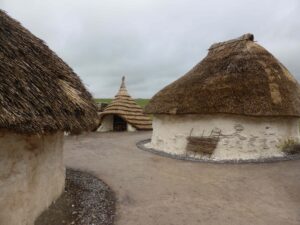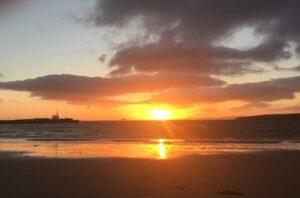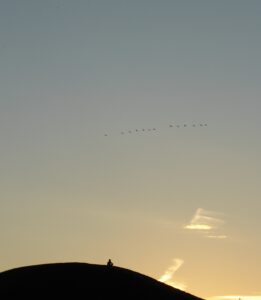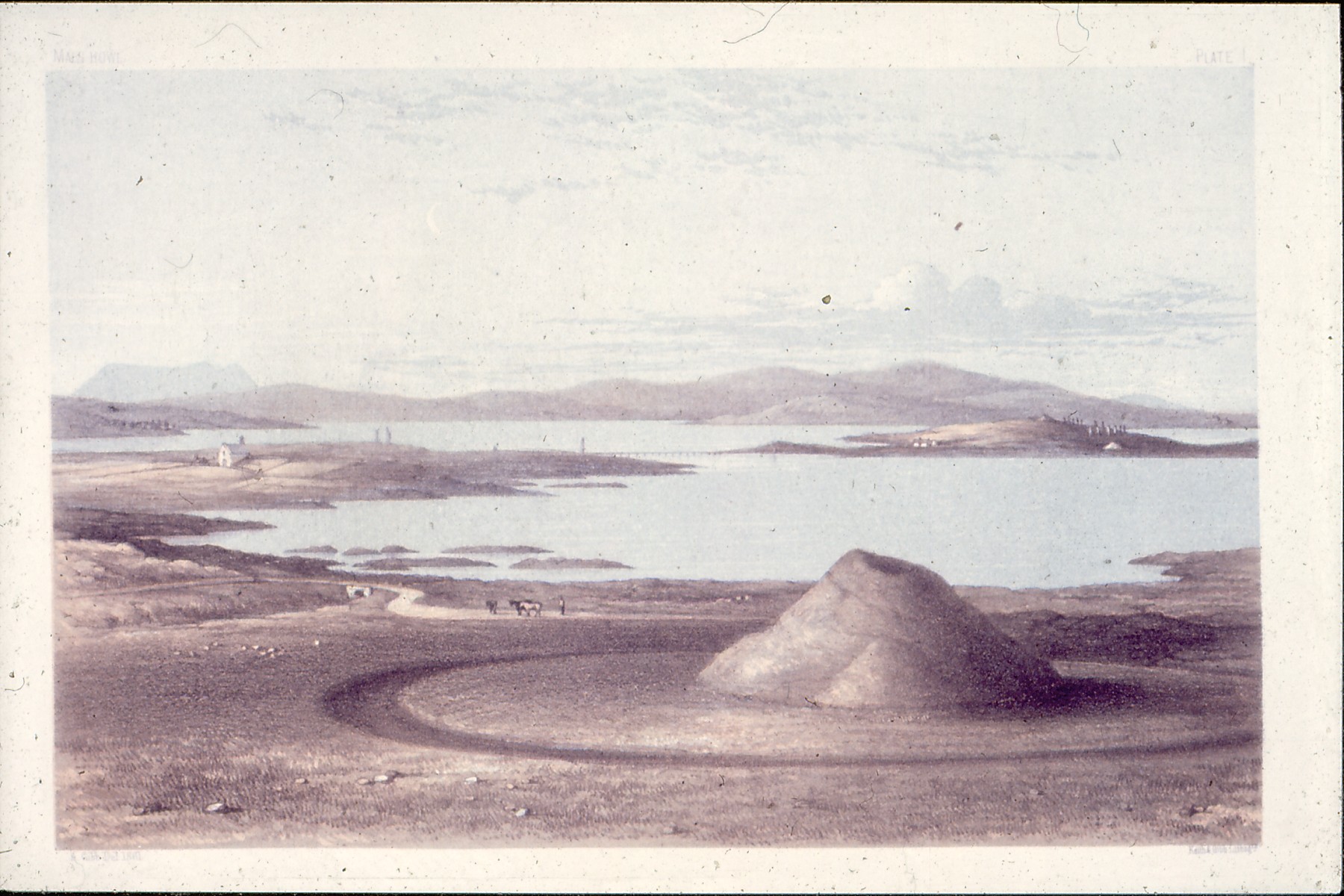Intrigued by the emerging evidence for Late Upper Palaeolithic activity in Scotland, Torben Bjarke Ballin and I have put together a short paper which was published earlier this week in the Journal of Lithic Studies. We are particularly Continue reading Searching for the Scottish Late Upper Palaeolithic
Category: News
Guardian Newspaper helps archaeology to reach the parts that other papers ignore

The Guardian Newspaper is starting an archaeology and anthropology blog: Past and Curious. It is a great step forward for a newspaper which has always (to my mind) had a good reputation for measured, well-researched archaeology. It should be interesting. I’m hoping it is going to tell us more about the ways in which the past impacts on ordinary everyday lives, today and in the past, here and elsewhere, rather than about ‘tombs, treasures, tribes, and high adventure’, though. This is just because one of my bugbears is the way in which we reduce everything archaeological to hyperbole. To be fair they do suggest that they will be aiming to get behind the scenes and into the nooks and crannies of our work. Perhaps I’m also jealous that archaeological adventurer was not a career path when I graduated, and these guys seem to be taking full advantage of the possibilities that suggests. But then, if I reflect, I’d have to say that I’ve had my fair share of adventures: digging on the Lebanese border with Israel in the 1970s; trying out stone age technology in Lapland in the 1980s; working in the arctic; and in the far south.
It is certainly true that archaeology impacts on everyone, everywhere, in every field of life. So, I look forward to reading their blogs and seeing how they settle in. It is a great step forward, towards the infiltration of archaeology into all aspects of the twenty-first century.
Mezolith – Book Review
As you might have gathered one of my passions is integrating archaeology, and particularly Mesolithic archaeology, into everyday life. By happy chance I was invited to review the two Mezolith graphic novels which do just that. You can read my review in the most recent issue of Mesolithic Miscellany (volume 24.2) which is free to download here, or to view online here. You need to scroll towards the end of the journal. If you are a fan of graphic novels, or the Mesolithic, I recommend getting hold of these two books!
Secrets of Orkney – Reminder

Just a quick reminder to those of you with access to the BBC to set your recorders to view Secrets of Orkney on BBC Two this evening (Monday 2nd January 2017) at 9pm.
The filming is wonderful and the story that it unfolds will get you thinking. For more about my involvement with the series see my entry in the Oxbow Books Blog here.
Let me know your opinions, and questions after the episodes. You can get my email address from the home page of my website.
The value of conferences

One evening in late summer, I found myself standing with some 200 people in the shadow of the massive Early Historic mounds at Gamla Uppsala in Sweden, watching a group of fire dancers as the sun went down. It was an amazingly evocative experience, not least because we were surely following in the footsteps of generations of others who also gathered at this historic place and enjoyed similar entertainment. My turn came as part of the conference dinner celebrations for the fourth Landscape Archaeology Conference which was held in Uppsala at the end of August. It was, I have to say, the best conference dinner evening I’ve ever been to, and I have been to a few.
Of course there is much more to a conference than the dinner, though the sceptical might note that I start by recalling that evening and only later move on to the meeting itself. I’ve been to three meetings on ‘Landscape Archaeology’ this year and all have been rewarding. All got me thinking.
Attendance at a conference is an expensive business, especially if, like me, you don’t have an employer willing to pay your costs. It also requires you to leave your desk for a few days and put work, more or less, on hold. You have to think carefully before committing yourself, and often you have to make this decision before the final programme has been released. This usually means a spot of last minute soul searching when you glance over the papers and worry that there is really very little that will be of interest to you.
Luckily, I always find that I am wrong. To start with there are the papers that are of relevance. A group of keen academics can turn even the most apparently disparate topics into a unified discussion of surprising significance. These are the ‘comfortable’ sessions based around a theme of obvious applicability. Discussions spill over into coffee and lunch breaks and ambitious plans are made for future collaborations and meetings. But, in a way the especial value for me comes from the papers that I’d not identified as relevant. There are sessions that I attend because I got chatting to someone the previous night, sessions where one paper looks promising, and sessions that just sound whacky. I like to think of these as my ‘uncomfortable’ sessions. All have presentations that get me thinking.
They act as a reminder of just how narrow our academic worlds can become. Of course, we focus on identified research topics, on the fields for which we are funded, or those in which we hold particular expertise. But, it is also important to think outside the box, to expose ourselves to other ways of doing things, and to other data sets and interpretations. When I see how people use their data when investigating other periods, or the constraints that have affected the people of the past in other places, then I begin to think of new ways of looking at prehistoric Scotland.
A good example of the ‘uncomfortable’ from my recent trip includes a discussion of the way in which a landscape of women has been identified by John Kinahan’s work among the hunter-gatherers in the Namib Desert. I’m only too aware that archaeological remains often favour men’s lives, but the idea of distinct yet co-existent landscapes created by women and men is new for me and something that opens exciting new possibilities. In Mesolithic Scotland we don’t have quite the density of sites that exist in Namibia, but it is something to think about.
Another example, this time from a ‘comfortable’ session, comes from Steve Dickinson’s work with Aaron Watson in Cumbria where he has been surveying the ‘natural’ landscape in minute detail and identifying a range of monuments, some completely natural, some partly worked, some totally anthropogenic, that lead towards the axe factories at Great Langdale. This work overturns our carefully defined boxes of ‘Natural’ and ‘Cultural’ into a sliding scale that pushes beyond the work of Bradley or Tilley in recognizing the archaeological value of place. Dickinson classifies it as Incipient Monumentality. He is not the first to use the term; it is explored (among other things) by Chris Scarre and Luc Laporte and their colleagues in a new book, and I’m hoping that we are going to learn more about the phenomenon in Cumbria as well as in other locations. I believe that it helps us to understand the Neolithic relationship to landscape across Britain and I’m looking forward to some future conference to discuss other examples.
Thinking about it, it is obvious that my own presentation has slipped into insignificance in relation to my new ideas. Hopefully I managed to interest others, and it definitely helps to give a paper because it helps people to understand where your own research is going. But really, I go to conferences to identify gaps and to learn, not to validate what I’m already doing.
With this in mind I have to mention that very big conferences don’t work for me. I’ve always fancied attending one because they tend to be prestigious. But I tried it last year and found that really I only mixed with people I already knew. It was a great venue to catch up with work colleagues, but there were so many people there and such varied papers that other contacts were somehow ephemeral. Maybe there is a knack I have yet to learn, but I don’t think I’ll be trying that again. I prefer something more targeted where there is at least one single theme uniting us.
So, the conference season for 2016 is over for me now. There is no money left in the kitty. But I’ve already been told of some promising meetings in the pipeline for 2017. Exciting!
Congratulations to Historic Environment Scotland

Maeshowe in happier days: view by Farrer publshed in 1862
Congratulations to Historic Environment Scotland on their first year as a newly established body. And what better way to celebrate than to close one of their flagship sites, Maeshowe, indefinitely. This has happened apparently with no consultation with the Local Authority or local community. HES should be ashamed of themselves. While the well being of the archaeological resource and its visitors remains paramount, several different solutions to the ‘Maeshowe Problem’ have been put forward over the years and the Local Council were apparently under the impression that one was moving forward. Maeshowe is part of only six World Heritage Sites in Scotland and a site that informs and inspires thousands of visitors a year about our Neolithic ancestors. As guardians of the site, HES have a duty to continue this and I look forward to hearing very soon as to how access will be re-established. Having sat on various committees (unpaid and clearly un-valued) over the years I’d recommend running a minibus from Skara Brae (with its ticketing and cafe) as a temporary measure. Maeshowe is a popular and significant site and it deserves better than this.
You must be logged in to post a comment.